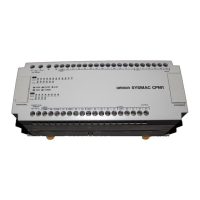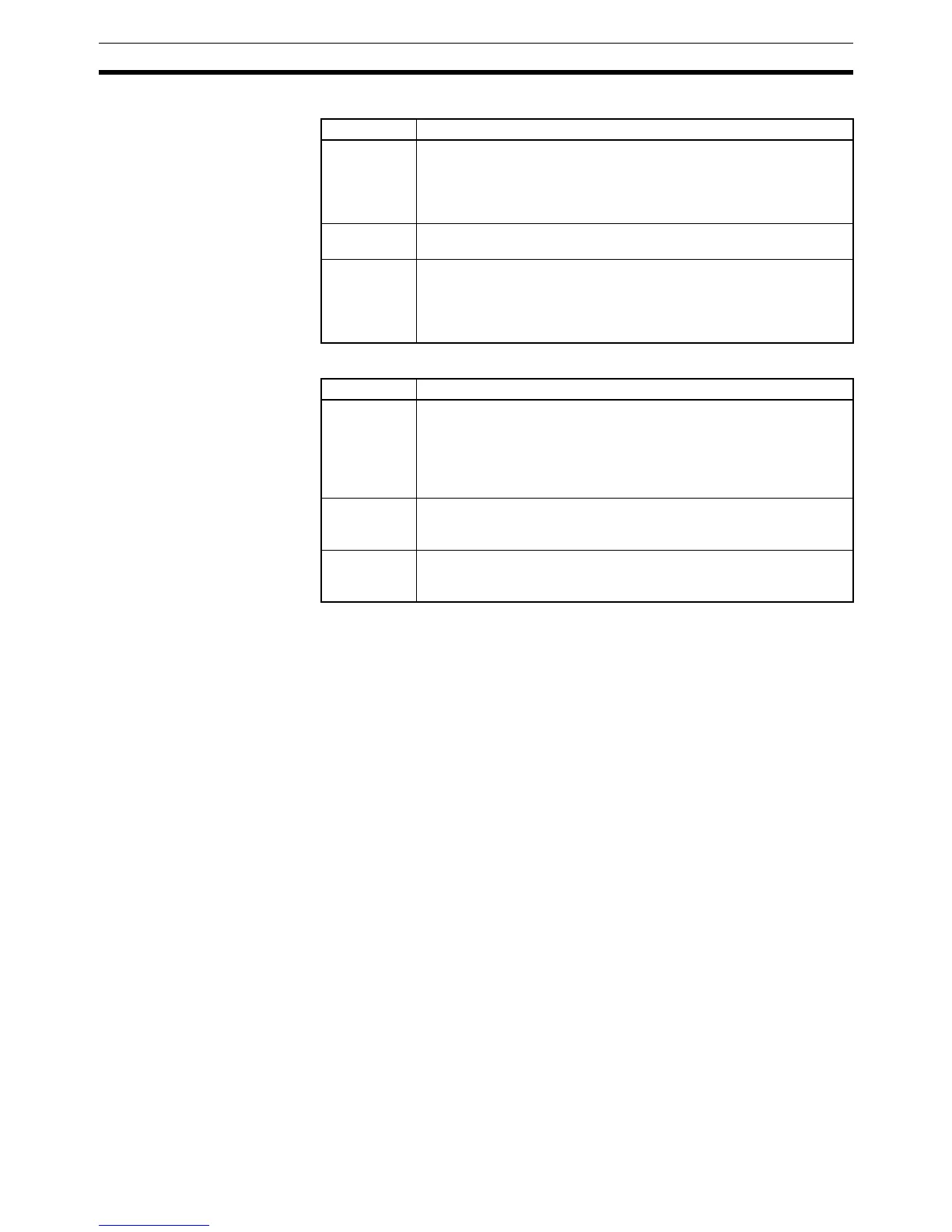436
User-defined Errors Section 8-4
Level B Errors
Level C Errors
!Caution Expansion instructions (those assigned to function codes 17, 18, 19, 47, 48,
60 to 69, 87, 88, and 89) are not subject to program checks. Program checks
also do not cover DM 1024 to DM 6143 for PCs that do not support this part of
the DM area (e.g., CQM1-CPU11-E and CQM1-CPU21-E). Data will not be
written even if these areas are specified and data read from these areas will
always be “0000.”
8-4 User-defined Errors
There are four instructions that the user can use to define his own errors or
messages. These instructions are used to send messages to the Program-
ming Console connected to the PC, cause a non-fatal or a fatal error.
MESSAGE – MSG(46) MSG(46) is used to display a message on the Programming Console. The
message, which can be up to 16 characters long, is displayed when the
instruction’s execution condition is ON. Refer to page 325 for details.
FAILURE ALARM –
FAL(06)
FAL(06) is an instruction that causes a non-fatal error. Refer to page 209 for
details. The following will occur when an FAL(06) instruction is executed:
1,2,3... 1. The ERR/ALM indicator on the CPU Unit will flash. PC operation will con-
tinue.
2. The instruction’s 2-digit BCD FAL number (01 to 99) will be written to
SR 25300 to SR 25307.
3. The FAL number will be recorded in the PC’s error log area. In CQM1 PCs,
the time of occurrence will also be recorded if a Memory Cassette with a
clock (RTC) is used.
Message Meaning and appropriate response
IL-ILC ERR IL(02) and ILC(03) are not used in pairs. Correct the program so that
each IL(02) has a unique ILC(03). Although this error message will
appear if more than one IL(02) is used with the same ILC(03), the
program will be executed as written. Make sure your program is writ-
ten as desired before proceeding.
JMP-JME
ERR
JMP(04) and JME(05) are not used in pairs. Make sure your program
is written as desired before proceeding.
SBN-RET
ERR
If the displayed address is that of SBN(92), two different subroutines
have been defined with the same subroutine number. Change one of
the subroutine numbers or delete one of the subroutines. If the dis-
played address is that of RET(93), RET(93) has not been used prop-
erly. Check requirements for RET(93) and correct the program.
Message Meaning and appropriate response
COIL DUPL The same bit is being controlled (i.e., turned ON and/or OFF) by more
than one instruction (e.g., OUT, OUT NOT, DIFU(13), DIFD(14),
KEEP(11), SFT(10)). Although this is allowed for certain instructions,
check instruction requirements to confirm that the program is correct
or rewrite the program so that each bit is controlled by only one
instruction.
JMP
UNDEFD
JME(05) has been used with no JMP(04) with the same jump number.
Add a JMP(04) with the same number or delete the JME(05) that is
not being used.
SBS
UNDEFD
A subroutine exists that is not called by SBS(91). Program a subrou-
tine call in the proper place, or delete the subroutine if it is not
required.

